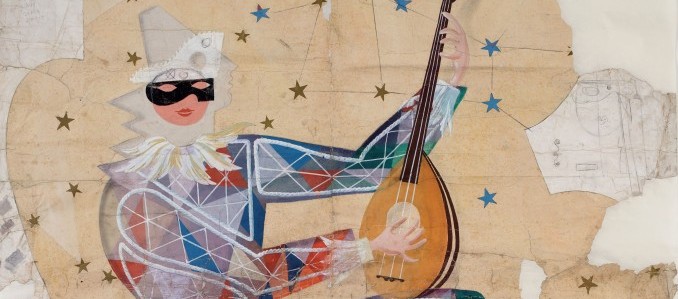
Seguso Glass for the Bauer (1950-1965)

Seguso Glass for the Bauer (1950-1965)
Venice, Hotel Bauer
18 May – 29 September 2013
Opening hours: 10 am – 7 pm
Free admission
For a deeper understanding of how Seguso Vetri d’Arte came to make some fascinating glass works for the Bauer Hotel, we must inevitably turn to Arnaldo Bennati, a ship-owner who was proprietor of the luxury hotel from 1930. He wished to furnish and decorate the hotel interior in a highly refined taste by introducing the beautiful and often bold forms of modern art.
In 1940 Bennati began to call in first-rate experts. One of the most renowned architects of the day, Marino Meo, was given the task of redesigning the architecture. At the customer’s express wish, he designed a rhombus-shaped structure so as to emulate a ship’s prow. Once the work had been completed, Seguso Vetri d’Arte, under the guidance of a designer of the calibre of Flavio Poli, made the lighting and overall glass fittings and embellishments for the hotel interior.
The first receipts for payment date from 1950, when the extremely demanding Bennati placed his trust in Seguso Vetri d’Arte. The glassmakers also worked on some other very important interiors belonging to the ship owner, such as the Hotel Bristol in Merano. In this case Seguso made the amazing, and in some ways never surpassed, large chandelier for the hotel banqueting hall.
The exhibition Seguso Glass for the Bauer has been staged to complement the concomitant large exhibition Seguso. Vetri d’arte: 1932-1973, curated by Marc Heiremans at the Murano Glass Museum. Visitors to the Bauer will be able to admire some of the period lighting and furniture still present in various rooms, together with preparatory drawings and the original design sheets used in the furnace by the master glassmakers and now in the archives of the Giorgio Cini Foundation’s Study Centre for Glass; they have been restored for the occasion thanks to the generous support of the Hotel Bauer.
This fascinating plunge into the past will enable visitors to explore the glassmaking process: from the mind of the designer, who conceives and puts ideas on paper to the finished product in the setting it was intended for, as envisaged according to personal visions of lighting aesthetics. Moreover, thanks to the collaboration of Seguso Vetri d’Arte, the extraordinary Arlecchino (Harlequin) has been restored and reassembled. For decades it was the entrance sign to the celebrated nightclub of the same name at the Bauer. It will be on show along with the large drawing and preparatory project, now in the Giorgio Cini Foundation.
The Study Centre for Glass and the Seguso Vetri d’Arte Archive
In 2012 a Study Centre for Glass was created within the Institute of Art History at the Giorgio Cini Foundation to promote and organise various activities: the creation of a General Archive of Venetian Glass, which immediately saw the arrival of the large Seguso Vetri d’Arte archive; the setting up of a specialised library on glass; the organisation of seminars, conferences and workshops for scholars and artists interested in the history, technology and developments in the art of glassmaking; and the staging of periodic exhibitions.
The Study Centre is one of the initiatives in the larger long-term project entitled Le Stanze del Vetro, (“Rooms for Glass”), promoted by the Giorgio Cini Foundation and Pentagram Stiftung, with the principal aim of showcasing 20th-century Venetian glass. After the inaugural exhibition – Carlo Scarpa. Venini 1932-1947 – another two exhibitions have already been organised: Fragile? (8 April – 28 July 2013, Island of San Giorgio Maggiore) and Napoleone Martinuzzi. Venini 1925 – 1932 (8 September – 1 December 2013, Island of San Giorgio Maggiore).
The Seguso Vetri d’Arte archive – presented by Pentagram Stiftung to the Study Centre – has over 20,000 drawings and designs and around the same number of photographic reproductions. It thus reflects the history of the glorious glass furnace from its beginnings in 1933 until the last decades of the 20th century. The most significant designs include watercolours and the artistic directors’ projects over the years. With thus find designers like Flavio Poli, who was awarded the Golden Compass in 1954 for his creations characterised by essential forms at a time, according to the prize statement, when “the field was affected by trivial decorativism”, or Mario Pinzoni who took over from Poli in 1963. He made the fascinating splendid designs in the showroom catalogues, in which Seguso’s whole production is described piece after piece from the 1960s, but in thumbnail colour silhouettes measuring only two centimetres.
Centro Studi del Vetro
Istituto di Storia dell’Arte
Fondazione Giorgio Cini onlus
Isola di San Giorgio Maggiore
Tel.: +39 041 2710306
centrostudivetro@cini.it
